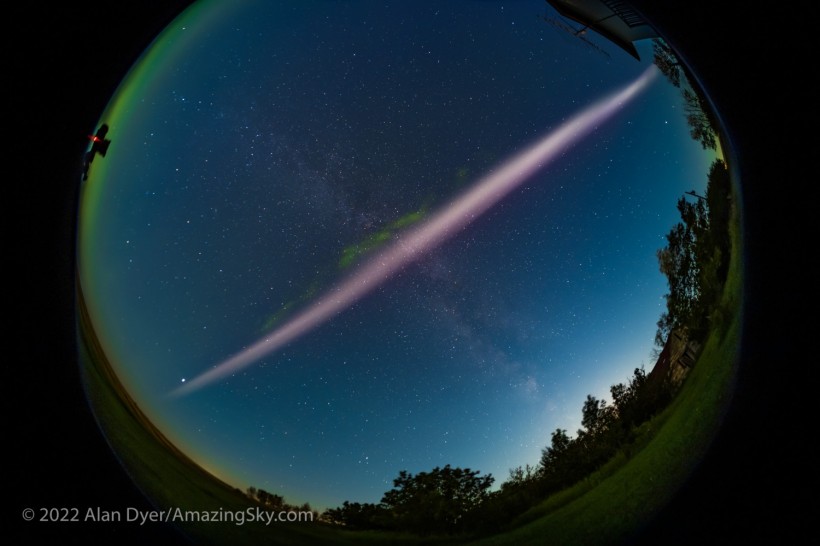
There were two events which happened in the sky on Sunday and Monday.
First, there were two unexpected solar storms. Second, a mysterious sky phenomenon known as "strong thermal velocity enhancement" (STEVE) occurred.
Unexpected Solar Storms
A sudden solar storm that struck Earth in the middle of the night on Aug. 7 and Aug. 8 morning doused our planet in a rapid flow of charged particles from the sun.
The storm over the weekend had maximum speeds of 373 mph (600 km per second).
Live Science said that the second solar storm on Monday was categorized as a G1 or "small" storm by the National Oceanic and Atmospheric Administration (NOAA) Space Weather Prediction Center, while the first storm on Sunday was classified as G2 or "moderate."
Solar storms are ranked by the NOAA on a scale of 1 to 5, with G5 being the highest.
As the sun approaches the peak of its roughly 11-year cycle, it is currently spitting forth solar storms left and right, according to Live Science. The outlet said that the magnetic poles of the sun will switch every 11 years, turning the south pole into the north pole and vice versa.
Read More: Concerned About AR3038? Here Are Tips on Protecting Your Electronics From Solar Storms
The Solar Storm Triggered a Mysterious Sky Phenomenon Known As STEVE
Beautiful auroras were observed at considerably lower latitudes than usual over the course of the weekend due to the collision of solar and terrestrial particles in Earth's atmosphere. In addition, the strange sky phenomena known as STEVE made an unexpected appearance in southern Canada, according to Space.com.
The beautiful ribbons of green and violet light were photographed by Canadian astronomy writer and photographer Alan Dyer. You can see his tweet below.
A great showing of @STEVEPhenomena last night, Aug 7-8, arcing across the sky, and showing his green fingers briefly for about 2 minutes. STEVE lasted about 40 minutes, appearing as the Kp5 aurora to the north subsided. This was 12:30 am MDT from southern Alberta. @TweetAurora pic.twitter.com/EtKF6udfFk
— Alan Dyer (@amazingskyguy) August 8, 2022
Although the glowing light resembles an aurora, it is actually a distinct phenomena that was "completely unknown" to science when it was first discovered. Today, scientists' understanding of what is happening has improved a little.
STEVE is a hundreds of miles-long, thin line of hot gas that pierces the sky. Satellite measurements have revealed that the hot air inside STEVE can reach temperatures of more than 5,500 degrees Fahrenheit (3,000 degrees Celsius).
According to Space.com, aurora hunters and citizen scientists in northern Canada discovered the odd sky glow known as STEVE for the first time in 2017.
STEVE usually appears as a huge ribbon of purple light that hangs in the sky for at least an hour. It is accompanied by a green "picket fence" of light that often vanishes after a short period of time.
STEVE appears far lower in the sky, in an area known as the subauroral zone, as opposed to the northern lights, which are caused when charged solar particles slam with molecules in Earth's upper atmosphere. That suggests that solar particles are probably not directly responsible for STEVE. However, during solar storms like the one on Sunday, STEVE typically appears after the northern lights have started to wane, as reported by Space.com.
Related Article: Geomagnetic Storm Creates Northern Lights: Will The Solar Flare Affects Satellites, Power Grid on Earth?













